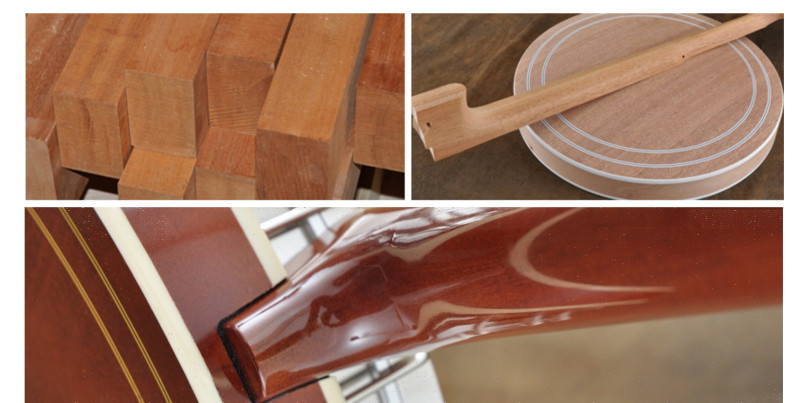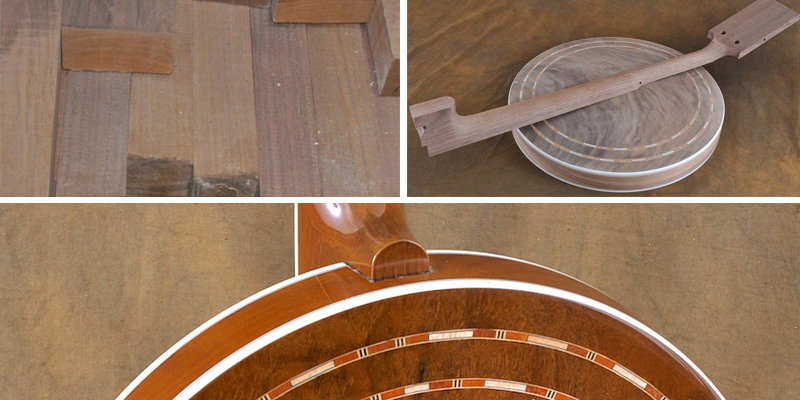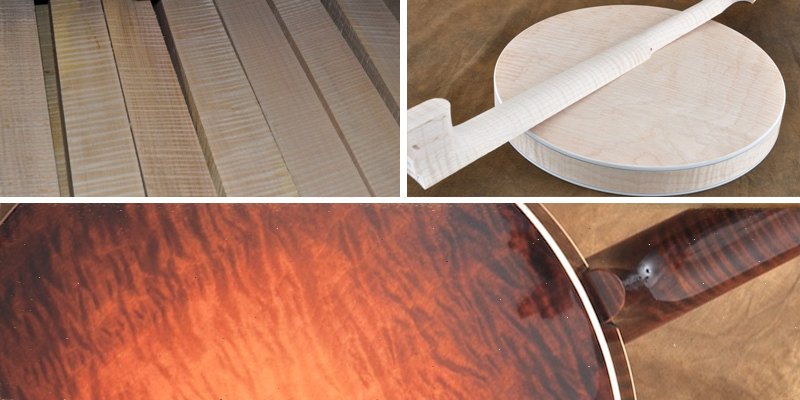Neck & Resonator Wood
Huber Banjos uses four different tone woods for our necks and resonators. Though these woods are standard on specific models in our line, any of these wood options can be substituted in a custom order.
You may also choose to mix woods, having your banjo made with a different wood grain for the neck and resonator.
The following wood choices are available:
Mahogony
Mahogany is used for the neck and resonator in our Lancaster model. It has an open, porous grain with contrasting dark streaks against the primary grain. It has historically been the most common wood used for banjo building.

Walnut
We use walnut for our Roanoke model – straight grain walnut for the neck and resonator side walls, and burl walnut for the resonator back. It has an open, porous grain with contrasting dark streaks against the primary grain. The straight grain walnut is quite similar to mahogany in appearance and sonic properties, though there are some differences in the look of the grain.
We do not offer a burl walnut neck, as the wood is simply not stable enough to resist twists and warpage over time.

Flame Maple
Flamed maple (sometimes called curly maple), is an especially choice grade of maple with a distinctive swirling pattern. When stained, the “flames” create a striking color contrast, each with its individual character. No two pieces are exactly alike.
This is the densest wood we use for banjo building, and some banjo connoisseurs feel that it makes for a somewhat sharper tone, with longer sustain.

Straight Grain Maple
Straight grain maple, which we use for the neck in our Kalamazoo model, is a very light wood with a primarily horizontal grain structure. It is denser than either mahogany or walnut and some players feel this gives their banjo a bit more “bite.”
We do not offer a straight grain maple resonator, though we can stain a maple neck to match any resonator you might choose.
Go back